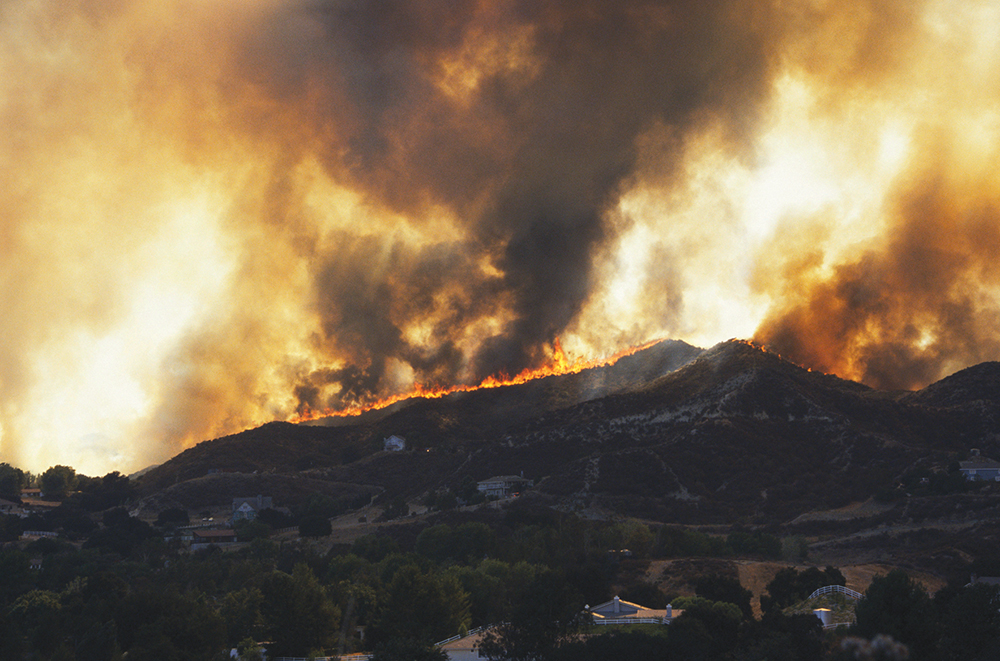Trending Articles ...
Scorched Earth: Wild Fires Leave California Wine Country Reeling, Industry Wondering
The good news is that the October fires in Napa and Sonoma didn’t do as much damage to the wineries, production facilities, and vineyards as feared. Save for a few hiccups in the supply chain, wine from these two regions is getting to restaurants and retailers and—tourism aside —business seems to be close to normal.
The bad news? It remains unclear, given that some fires were still burning towards the end of October, as to the extent of the damage. This includes smoke taint and burned-out vineyards in the two most important wine regions in the U.S.
“Everyone expressed a lot of concern about what was going to happen, but fortunately, the disruptions have been small, and especially for the producers we work with,” says Michael Warner, who owns the four-year-old DCanter Wine Boutique in Washington, D.C. “Obviously, every-one is still very concerned about the tragedy and the people who lost their homes. But over the long term, we’re not seeing any major disruption. In the short term, we’re seeing some delays in getting products, but that should clear up by the end of the year.”
Getting Back On Track
In fact, many previously scheduled tastings and road tours continued as scheduled. This, say state viniculture officials and trade groups representing Napa and Sonoma wineries, is another example that it’s business as usual. More positives:
--Most of the harvest was done before the fires started, probably more than 90 percent.
--UC-Davis enologists, in a late October report, said that only a small percentage of the 2017 grape harvest might have been harmed by the and smoke. In addition, they wrote, from causing more damage than they did.
--The UC-Davis report also said smoke or heat from the fires didn’t damage fermenting wine or wine that had already been bottled. Also, said the trade groups, wine inventories from previous vintages were generally unharmed.
--All told, said the trade groups, fewer than a dozen of the approximately 1,200 wineries in Mendocino, Napa and Sonoma counties were destroyed or heavily damaged. This is far less than the number feared in the early days of the fire.
Declared the Wine Institute, which represents the state’s wine industry: “Most winery tasting rooms have reopened for business. People planning to visit should not cancel their trips. Now is the time to visit and support wine country.”
Concerns About Vineyards & Pipeline
Still, this didn’t prevent wine drinkers from worrying about their favorite labels. Several retailers across the country reported heavier than usual buying in who were worried supplies would be short. And a couple of retailers interviewed for this article said they were considering buying more for this holiday season than usual, just in case.
The immediate concern, as Warner noted, was short-term supply, mostly caused by a lack of transport. Trucks nor- areas were being used to bring in relief and recovery supplies, including building materials.
The longer-term concern, said some retailers, was smoke taint: damage caused to ripening grapes, grape juice being fermented, and wine being aged by smoke soot and ash from a land on the grapes, and it can result in a variety of off-pharmaceutical-like tang.
“Exposure and duration of exposure are the critical factor,” says Jon McPherson, winemaker at South Coast Winery in Temecula, which wasn’t in the area. “Most of what was left hanging was Cabernet Sauvignon that was already ripe, or close to it, while grapes are more susceptible to the effects of smoke taint during veraison. I am sure some guys will have issues, but I would think it will have to be a wait and see.”
In addition, says Stephen D. Menke, PhD, the Colorado state enologist and an associate professor of enology at Colorado State University, smoke taint usually won’t harm wine—whether it’s being fermented, aged or stored —as long as the grape product is in an enclosed building that wasn’t damaged by fire and where smoke didn’t get in.
Future Shock
The other concern revolves around whether vines will need to be replanted after the fire, how many vines lost, and how old the vines are that need to be replaced. In this, the supply chain could be a factor again, as vineyard owners scramble to find replacement vines in what could be a tight market. If extensive replanting is necessary, it will probably take place over a couple of years.
The soil itself won’t be affected, says Menke; rather, it’s a question of how much damage the vines that didn’t burn down sustained and whether they can come back. This, given how grapevines can be quite resilient, may not be as big a problem as feared.
That can’t be determined until vineyard workers can get on the land and look at the vines, and even then some spring. Because of this, Menke said, new vines will probably be planted between existing vines.
And if some of the region’s 50- to 75-year-old vines need to be replaced? That will pose one of wine’s most meta-physical questions: How much difference in quality do old vines make?
Click Here to check out the article as it appeared in The Journal.


